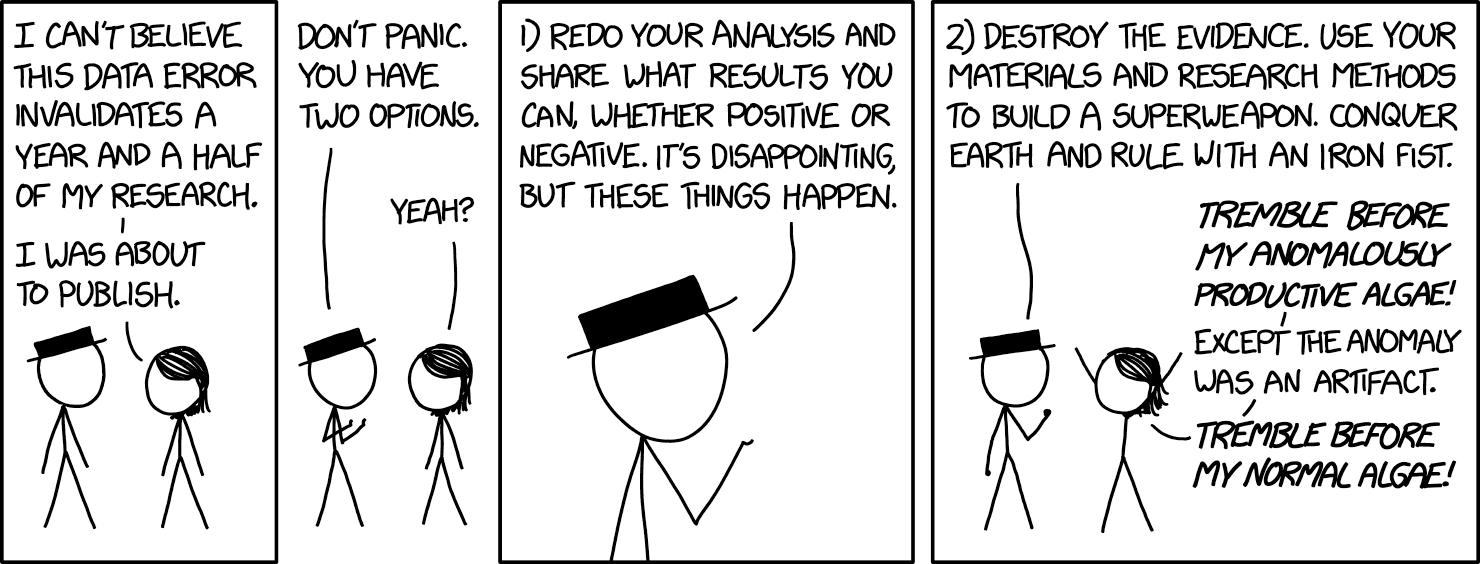Data Collection Continued
Last updated 2023-09-13
By now you should have already successfully run your entire experiment once, and collected some data.This is great!Take your time in your lab to attain as many trials as you can.The more trials you conduct the more assured you can be in the trends you are seeing.This is your last opportunity to collect your data so make the most of it.
Remember that you should be working to minimize the differences between today's trials and the trial(s) you ran in the last data collection period. Your methods should be as similar as possible - assuming, of course, your experiment worked last time.
Making changes adds a new variable to your experiment, which will have an unknown impact on your results. If you must make changes for some reason, make sure that you carefully document everything once again.

Collaboration is a key part of science. During this time, you may want to start informally discussing what you are seeing with your partner, peers and / or your teaching assistant to see if you can explain what you are seeing.
- If you are seeing what you hypothesized, ask yourself, is it for the reason you thought? Why or why not?
- If you are seeing something different than what you had originally hypothesized why is that?
Scientists often use each other to discuss their findings and / or issues in order to help better understand what is going on. Your peers and your teaching assistants are resources for you so take advantage. Collaboration provides the opportunity to learn much much more about science and the scientific method so use it wisely.